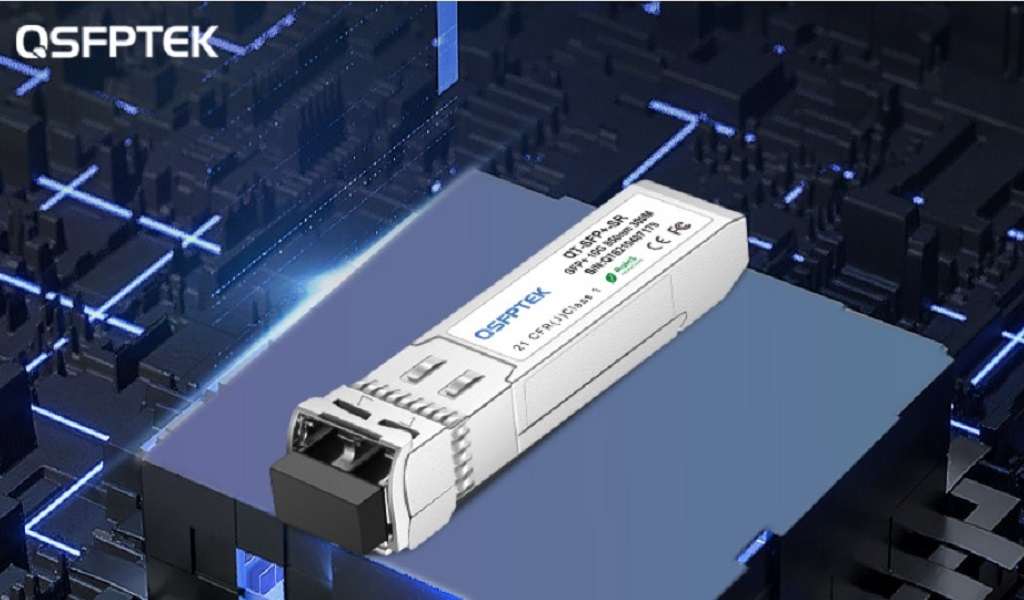Optical communication has become the main means of communication in modern information networks. As users’ communication speed and capacity requirements increase, optical communication networks have begun to upgrade to higher rates. The commercial backbone network has been gradually transformed to 40G or 100G, which drives the rapid development of downstream high-speed networks and devices.
The market share of 10G optical modules (click here) has gradually increased, becoming a new growth point in the optical device market. There are a variety of 10G rate optical transceiver modules on the market, mainly including Transponder, Xenpak, X2, Xpak, XFP, and SFP+. As technology and solutions have improved, some earlier types are less suitable for today’s networks and devices.
Following the development of commercial optical communication networks, the communication rate of the military optical communication backbone network has begun to be upgraded to 40Gbit/s (click here), and the single-wavelength rate is widely used at 10Gbit/s. Therefore, the demand for military optical transceiver modules with a rate of 10Gbit/s is rapidly expanding.
However, most of the 10G optical modules in various packaging forms are aimed at the civilian and commercial markets. The operating temperature range is only 0 ° C ~ 70 ° C, and they are not resistant to vibration and shock or bulky and have high power consumption. Equipment requirements.
To adapt to the upgrade speed of military optical communication networks, military optical communication equipment manufacturers urgently need a wide temperature (operating temperature range of 40℃~+80℃), anti-vibration, anti-shock, cost-effective, compact and lightweight military-grade 10G optical fiber. Module product. In response to this demand, the author studies the related technology of 10G optical transceiver module and proposes a design idea and method of a small 10G optical transceiver module with a non-standard package that can be applied to military networks.
Overall Design of 10G Optical Module
10G optical transceiver module is a high-speed optoelectronic device using high-speed laser components and high-speed photodetector components as the core. It realizes a high-speed photoelectric conversion function under the combined action of a laser drive circuit, detector receiving amplifier circuit, control circuit and other peripheral circuits. 10G optical transceiver modules that can be used in military networks should not only meet general requirements in terms of technical indicators but also have better performance in terms of operating temperature range and anti-vibration and anti-shock performance.
The physical composition of the 10G optical module mainly includes four parts: the transmitting part, the receiving part, the control part and the encapsulation shell. Considering the limitations of package size and power consumption, the optical module of this design does not contain functions such as serializer/deserializer and encoder/decoder.
It is only a photoelectric conversion device, which is only responsible for completing the conversion of optical/electrical signals, and leaves other circuit processing functions to the user’s circuit board, thereby simplifying the structure and circuit design of the optical module, greatly reducing power consumption, reducing The reduced size makes it easy to implement high port density applications.
There are two key points in this design: one is to maintain stable parameters such as the optical power and extinction ratio of the optical module laser under wide ambient temperature conditions to improve the communication quality of the optical module.
The design can make the optical module have sufficient anti-vibration and anti-shock performance. Therefore, we will focus on design improvements in temperature compensation and interface packaging to ensure that 10G optical modules can work reliably and stably under military conditions.
Software Design
When writing a program, attention should be paid to the rigor of the program logic, the rationality of the architecture, and improving the efficiency of program operation. The MCU program realizes the function of the control part in this design, so the software design is also an important part. The software content includes system initialization, status monitoring subroutine, module parameter setting subroutine, module debugging subroutine, etc.
The status monitoring subroutine collects and monitors parameters such as optical module voltage, ambient temperature, laser bias current, and luminous laser power. The detector receives optical power through the AD input port of the MCU chip and generates warning and warning alarm signals.
The specified range, the temperature exceeds the operating range, the received optical power is too large or too small, and the laser is aging, etc., is reported. It is used for the debugging subroutine and the parameter setting subroutine to control the working state of the optical module.
Achieve the best. The modulation current and bias current corresponding to the same temperature for different optical modules will differ due to differences in external circuits or laser performance. Therefore, before debugging, each optical module can only use the preset values in the memory.
Aiming at the difference in an external circuit or laser performance, the debugging subroutine debugs the bias current value and modulation current value of the optical module. It uses the temperature test value to build a digital look-up table so that the optical module can work under various temperature conditions. After debugging, the parameter data is solidified into the corresponding memory through interface commands.
Conclusion:
Optical communication equipment can also be used for military high-speed optical communication equipment. The 10G optical module designed in this paper has been tested. The technical indicators meet the requirements and can normally work under wide temperature conditions from -40°C to 80°C. The rationality and feasibility of the design are verified.

















